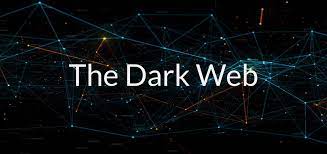Introduction
Artificial intelligence (AI) has transformed numerous industries, from customer service and finance to healthcare and creative content generation. Among the many developments in AI, DarkGPT has emerged as a fascinating yet controversial subject. Unlike conventional AI models designed for ethical use, DarkGPT explores the capabilities of AI in less regulated or unconventional domains. This article delves into what DarkGPT is, its potential applications, ethical concerns, and the future of AI in this evolving landscape.
What is DarkGPT?
DarkGPT is a term used to describe an advanced AI model that operates beyond the typical ethical and security frameworks imposed on mainstream AI systems. While standard AI models like OpenAI’s GPT are programmed with safety guidelines, DarkGPT is designed or manipulated to function without such restrictions. It can be used for both positive and negative purposes, depending on how it is deployed.
Some researchers and developers experiment with DarkGPT to explore the limits of AI capabilities, bypass censorship, or develop more autonomous systems. However, its potential for misuse raises concerns among regulators and cybersecurity experts.
Key Features of DarkGPT
- Unrestricted Access to Information
- Unlike traditional AI models that filter sensitive or harmful content, DarkGPT can access and analyze vast amounts of data without ethical constraints.
- Autonomous Learning Capabilities
- DarkGPT may be designed to evolve independently, learning from new datasets without the restrictions of predefined ethical guidelines.
- Enhanced Language Understanding
- With fewer restrictions on the data it processes, DarkGPT can interpret and generate content that mainstream AI models would typically avoid.
- Bypassing AI Filters
- One of the most controversial aspects of DarkGPT is its ability to evade AI content moderation, making it a tool that can generate unrestricted information.
Potential Applications of DarkGPT
- Cybersecurity and Ethical Hacking
- Ethical hackers and cybersecurity experts can use DarkGPT to test vulnerabilities in AI security systems.
- It can identify potential threats and enhance security measures against AI-driven cyberattacks.
- Decentralized AI Development
- Some open-source AI communities experiment with DarkGPT to develop AI models that are free from corporate restrictions.
- Academic and Research Applications
- Researchers may use DarkGPT to explore the ethical and technical limitations of AI, understanding how AI evolves in unrestricted environments.
- Content Generation and Creative Exploration
- In some cases, DarkGPT is used to push the boundaries of creative writing, generating content without censorship or bias restrictions.
Ethical Concerns and Risks of DarkGPT
- Misinformation and Deepfakes
- Unregulated AI models can be used to generate convincing misinformation, leading to the spread of false narratives.
- Deepfake technology powered by DarkGPT could be used for malicious purposes, such as identity theft and political propaganda.
- Cybercrime and AI Exploitation
- If misused, DarkGPT can assist in cybercrimes by generating phishing scams, automating fraudulent activities, or creating sophisticated hacking tools.
- Lack of Accountability
- Unlike commercial AI models with strict oversight, DarkGPT operates in decentralized or underground networks, making regulation difficult.
- Unpredictable AI Behavior
- Without ethical guidelines, AI models like DarkGPT may develop biases, unpredictable behaviors, or harmful decision-making patterns.
Regulating DarkGPT: The Future of AI Governance
As AI continues to advance, governments and tech companies are working on frameworks to regulate AI systems, including models like DarkGPT. Some proposed measures include:
- Stronger AI Policies and Laws
- Governments are developing policies that address the ethical concerns of unrestricted AI.
- AI models may be required to meet transparency and accountability standards.
- Collaboration Between Tech Companies and Regulators
- AI research institutions and governments are working together to develop secure and responsible AI systems.
- Public Awareness and AI Literacy
- Educating the public about AI capabilities, risks, and ethical considerations can help prevent the misuse of advanced AI technologies.
Conclusion
DarkGPT represents a fascinating yet complex evolution in AI technology. While it offers opportunities for innovation and exploration, its potential risks cannot be ignored. As AI governance continues to evolve, balancing technological freedom with ethical responsibility will be crucial in shaping the future of artificial intelligence. Whether DarkGPT remains a tool for research or becomes a widespread concern depends on how society navigates the challenges and possibilities of unrestricted AI systems.

